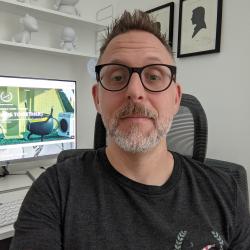Themes of memory and loss have been tackled countless times in the world of cinema, but I’m not sure I’ve ever seen them as beautifully explored as in Jeong Dahee’s sumptuous nine-minute animation 빈방 THE EMPTY. A lyrical short in which dust and time have a major role to play, you can easily find yourself lost in the short’s flowing aesthetic and moved by its heartfelt storyline.
“A room retains one’s traces of life”
The film opens to a soundscape of what appears to be waves crashing on the shore, while visually we’re presented with the image of a sheet pulsating in time with the audio. As the bedclothes slip away, revealing the naked body of a woman, the lines of her pubic area cleverly transform into a room and the voiceover reveals “I am here, in this room”. As time passes, we soon learn the importance of this room and its contents (or lack of them), as the film opens itself up and reveals a touching storyline centred around absence and longing. “A room retains one’s traces of life”, the director explains in this statement on her website, before explaining that she wanted to explore “loss as time flows, by reflecting on the traces left in a room”.
Narratively, THE EMPTY borders on the more experimental regions of what we usually feature on Short of the Week, but Jeong’s enigmatic approach to storytelling means we pick up enough of the small details to piece together the larger picture. As the dust floating in the sunlight takes the shape of a woman knitting, this brief moment represents loss so perfectly it’s both heartbreaking and enchanting in equal measures. The lyrical nature of the visuals are complimented by the poetic rhythm of the voiceover. “Time is what the room has has most”, our narrator reveals, before adding that “dust is what I have the most” – simple sentiments with great impact in the context of the film.

As the dust motes dancing in the sunlight take the shape of a woman, it forms a lingering image.
Visually, Jeong’s short helps land the impact of the narrative largely through its representation of empty space. From the outlines of furniture on the room’s walls to the shapes left on a dusty table when objects are removed, just like the voiceover these simple visual metaphors hold great power when combined with all that comes before and after them. However, it’s the images of the naked woman, which bookend the film, that prove the most resonating. That opening sequence where her body transforms into the room is a thought-provoking transition into the world of THE EMPTY, but its the final images of this woman that I just can’t shake. The sense of stillness and calm as she sits alone, unclothed, in the bed has a reassuring effect, while the simple and slight turn of her head is strangely comforting. As her hands reach out and open wide the curtains, drenching the room, and us, in sunlight, we’re immersed in this notion of completion – a time to move on. It’s a perfect conclusion and surprisingly uplifting.
The follow-up to her Annecy award-winning short Man on the Chair, THE EMPTY had an impressive festival run back in 2016-17, playing the likes of Fantoche, Ottawa and Clermont-Ferrand. Though six-years old at the time of writing this article, Jeong’s film has aged well and not lost any of its impact in either story or style. Her 2019 short Movements, a film once again interested in time, also had an impressive tour on the festival circuit and will surely prove popular online, whenever it’s released.

 Rob Munday
Rob Munday